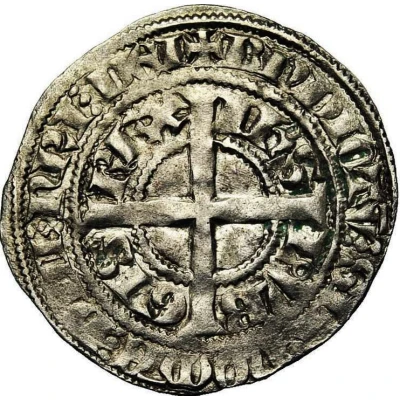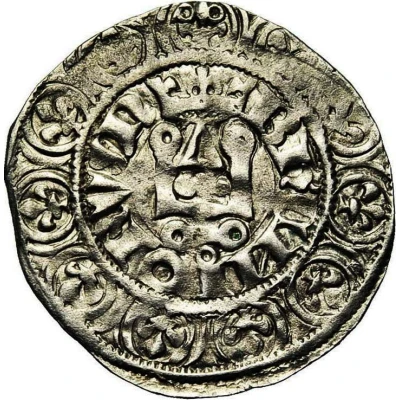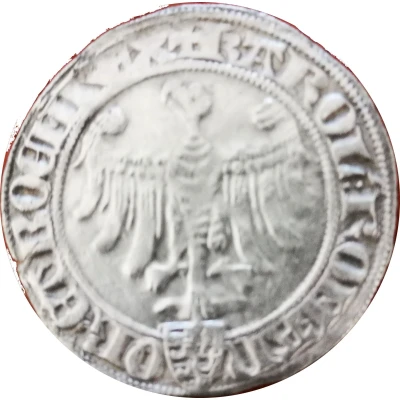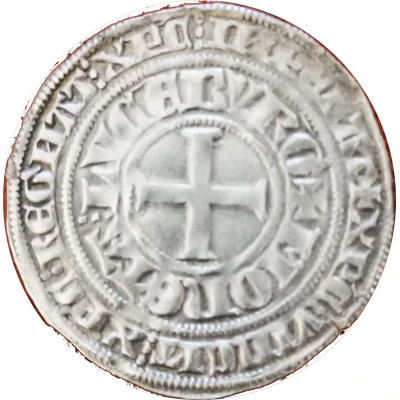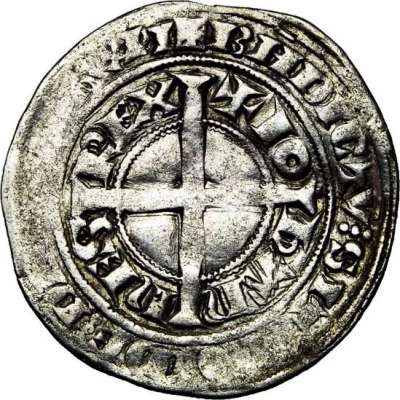
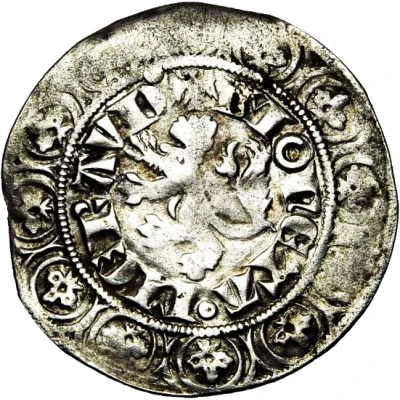

© Jean Elsen & ses Fils s.a.
Gros with lion - Jean the Blind ND
| Silver | 3.4 g | - |
| Issuer | County of Luxembourg (Luxembourg) |
|---|---|
| Count | Jean the Blind (1310-1346) |
| Type | Standard circulation coin |
| Years | 1309-1346 |
| Value | Gros (1⁄20) |
| Currency | Livre Tournois (963-1353) |
| Composition | Silver |
| Weight | 3.4 g |
| Shape | Round (irregular) |
| Technique | Hammered |
| Demonetized | Yes |
| Updated | 2024-10-06 |
| Numista | N#94263 |
|---|---|
| Rarity index | 95% |
Reverse
Luxembourgish lion, crawling, crowned, on the left, with forked tail, surrounded by legend, with an inner girdle and a border of twelve leaves of ache, each included in a small circle framed by two arches, external pearled circle.
Script: Latin (uncial)
Lettering: (aigle) MONETA• MERAVD'
Lettering (regular font): (AIGLE) MONETA• MERAVD'
Translation: Mint of Méraude
Edge
Plain
Comment
Rare coin, struck at the mint of Méraude (Poilvache) between 1337 and 1344, imitating the , Count of Flanders from 1322 to 1346.16 pieces listed by Weiller, whose average weight is 3.4 grams.
Large number of variants of legend and punctuation are known.
Weiller identified eight variants for the obverse and four for the reverse, before all different writing forms for the letters A, E, M, and N.
Side obverse/reverse: the obverse side is generally determined by the "most important" symbol (see Weiller, page 3), which would be the lion for this piece. On the other hand, in this case, an exception was made by Weiller and Probst since the double legend is more significant, this choice was respected for this sheet.
Some sales:
Interesting fact
One interesting fact about the Standard circulation coin Gros with lion - Jean the Blind ND (1309-1346) from County of Luxembourg (Luxembourg) made of Silver weighing 3.4 g is that it was minted during the reign of Jean the Blind, who was the Count of Luxembourg from 1309 to 1346. Despite being blind, Jean the Blind was known for his military prowess and political acumen, and he played a significant role in the politics of the Holy Roman Empire during his lifetime. The coin's design, featuring a lion on one side and the Count's name on the other, reflects the symbolism of power and authority that was common in medieval coinage.
